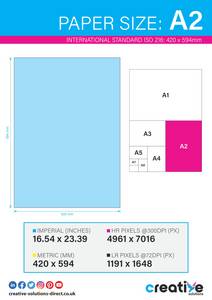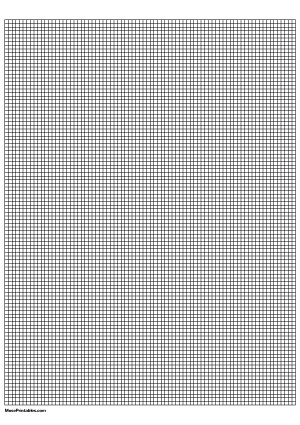a4 paper is a widely-used paper size around the world, particularly in Europe and other international contexts. Its dimensions and versatility make it suitable for a vast array of applications, from printing documents to creating artwork. This article aims to provide a comprehensive understanding of A4 paper size, its origins, standardization, and applications.
Origins and Standardization
The history of A4 paper size can be traced back to the early 20th century. In 1921, the German Standards Institute (DIN) developed a series of paper sizes designated as A sizes. The a4 size was standardized as a part of this series in 1922. The German Industrial Standard (DIN 476) formally defined the dimensions and tolerances of A4 paper. Later, in 1975, the International Organization for Standardization (ISO) adopted the DIN A series of paper sizes as the international standard for paper sizing. This led to the widespread adoption of A4 paper as a global standard.
Dimensions
A4 paper is defined by its specific dimensions. It is slightly longer and narrower than letter-sized paper, which is commonly used in North America. The precise dimensions of A4 paper, as per ISO 216, are:
| Measurement | Dimension | Dimension (inches) |
|---|---|---|
| Width | 210 millimeters | 8.27 inches |
| Length | 297 millimeters | 11.69 inches |
The aspect ratio of A4 paper is the ratio of its length to its width. The aspect ratio of A4 paper is √2, approximately 1.414.
Standardization
Standardization of paper sizes, including A4, is crucial for consistency in various industries such as printing, publishing, and design. The adoption of A4 as an international standard by ISO ensures that documents and designs created on A4 paper can be easily reproduced and shared across different countries and organizations without issues related to scaling or cropping.
A4 paper’s standardization also extends to envelope sizes, with C4 envelopes designed specifically to fit A4 sheets comfortably. This compatibility between paper and envelope sizes simplifies the process of mailing documents and ensures a professional presentation.
Manuscript Paper Size Standards

In the realm of publishing and printing, manuscript paper size standards play a significant role in ensuring uniformity and ease of handling various types of documents. Understanding these standards is essential for authors, publishers, and printers alike.
Book Printing
When it comes to book printing, the choice of paper size can impact the overall look and feel of the final product. Common manuscript paper sizes for books include A4, A5, and B5. Each size offers distinct advantages depending on the type of book being printed. Here is a comparison of these sizes:
| Paper Size | Dimensions | Common Use Cases |
|---|---|---|
| A4 | 210 x 297 mm | Textbooks, novels, reference books |
| A5 | 148 x 210 mm | Pocketbooks, journals, notepads |
| B5 | 176 x 250 mm | Magazines, workbooks, catalogs |
Journal Publishing
In journal publishing, manuscript paper size standards are crucial for maintaining consistency across different publications. Most academic journals follow specific guidelines for paper size to ensure compatibility with printing and binding processes. The most common paper size for journals is A4, chosen for its readability and space efficiency.
List of Journals using A4 paper size:
- Journal of Applied Sciences
- European Journal of Scientific Research
- Journal of Agricultural Science and Technology
Magazine Layout
Magazine layout designers often work with specific manuscript paper sizes to create visually appealing and well-organized publications. While magazines can vary in size based on their target audience and content, A4 is a popular choice for its balance of space for images and text. Designers can use A4 paper effectively to plan out page layouts, considering factors like margins, columns, and bleed areas.
Conclusion

In conclusion, A4 paper size plays a crucial role in various industries, from publishing to design. Its standardization and versatility make it a preferred choice for printing documents, creating artwork, and publishing materials. By understanding the origins, dimensions, and applications of A4 paper size, professionals can ensure consistency and quality in their outputs. Whether you’re printing a novel, publishing a journal, or designing a magazine, A4 paper size offers the ideal canvas for your creative endeavors.
Manuscript Paper Size Standards

Manuscript paper size standards are essential for maintaining consistency and ensuring efficiency in publishing, printing, and design industries. Understanding the various standard sizes and their applications can help professionals make informed decisions when selecting the appropriate paper size for their projects.
Book Printing
Book printing requires careful consideration of manuscript paper sizes to achieve the desired look and functionality of the final product. Different paper sizes offer unique advantages depending on the type of book being printed. Here is a comparison of common manuscript paper sizes for books:
| Paper Size | Dimensions | Common Use Cases |
|---|---|---|
| A4 | 210 x 297 mm | Textbooks, novels, reference books |
| A5 | 148 x 210 mm | Pocketbooks, journals, notepads |
| B5 | 176 x 250 mm | Magazines, workbooks, catalogs |
A4 paper size is commonly used for textbooks and reference materials due to its ample space for text and diagrams. On the other hand, A5 paper size is favored for pocket-sized books that are portable and convenient for reading on the go. B5 paper size strikes a balance between A4 and A5, making it suitable for magazines and workbooks that require a moderate amount of content per page.
Journal Publishing
In journal publishing, adhering to specific manuscript paper size standards is crucial for consistency across different publications. Most academic journals follow guidelines regarding paper size to ensure compatibility with printing and binding processes. A4 paper size is widely preferred for journals due to its readability and space efficiency, allowing researchers and readers to access information comfortably.
List of Journals using A4 paper size:
- Journal of Applied Sciences
- European Journal of Scientific Research
- Journal of Agricultural Science and Technology
Magazine Layout
Magazine layout designers rely on manuscript paper sizes to create visually appealing and well-organized publications. While magazine sizes can vary based on target audience and content, A4 paper size is a popular choice for its versatility. Designers can effectively utilize A4 paper to plan out page layouts, considering factors like margins, columns, and bleed areas to enhance the overall visual appeal of the magazine.
By understanding manuscript paper size standards and their applications in book printing, journal publishing, and magazine layout design, professionals can streamline their workflow and deliver high-quality results in their respective fields.
Conclusion

Manuscript paper size standards play a significant role in various industries by ensuring uniformity and efficiency in publishing, printing, and design processes. Professionals across different sectors rely on standard paper sizes like A4, A5, and B5 to create printed materials that meet industry standards and user expectations.
Whether you’re printing a textbook, publishing a research journal, or designing a magazine, choosing the right manuscript paper size is essential for achieving your desired outcomes. By familiarizing yourself with the characteristics and common use cases of different paper sizes, you can make informed decisions that enhance the readability, usability, and visual appeal of your printed materials.
In conclusion, an understanding of manuscript paper size standards empowers professionals to optimize their workflow, improve communication with printing partners, and deliver exceptional printed products to their audience. By embracing standardization in paper sizes, industries can uphold quality standards and facilitate seamless collaboration in the creation and dissemination of printed materials.